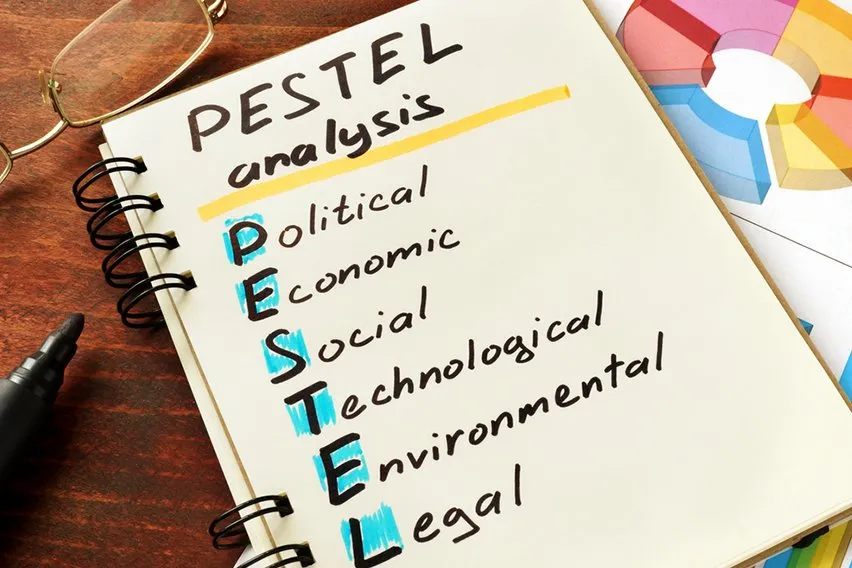What Is a Strategic Management Process?

Every business is going to operate differently depending on the industry and the products or services they offer. That said, every small business owner or manager wants to find a competitive advantage and achieve better performance. And to gain a competitive advantage, you want your business to have higher profitability.
One of the ways that you can do this is by implementing a strategic management process. The strategy involves planning for both predictable and unforeseen circumstances. You can use the strategy regardless if you’re a small or a large organization and it comes with a ton of benefits.
Here is everything that you need to know about a strategic management process.
Here’s What We’ll Cover:
What Is a Strategic Management Process?
Five Stages of the Strategic Management Process
What Is a Strategic Management Process?
When it comes to a strategic management process, it’s more than a group of rules or guidelines for your business to follow. Strategic management is identifying strategies that you can use to gain a competitive advantage. For this to happen, you need to have an in-depth knowledge of the general and competitive organizational environment.
Strategic management can get broken into a few different areas. A prescriptive approach will outline how certain strategies should get developed. Whereas a descriptive approach focuses on how those strategies will get executed and put into practice. The approach you take depends on if the strategies get developed with an analytical process.

Most of the time, the upper management of an organization is responsible for developing a business strategy. However, a lot of strategies get considered based on the actions or ideas from lower-level managers or employees.
To help keep things simple, a strategic management plan is all about managing resources to achieve your goals and objectives. The strategy involves setting objectives, analyzing your competitive market and environment and evaluating. Then, the strategies get rolled out across your whole organization.
Nonprofits and universities often use the strategic plan to meet their goals and objectives.
Five Stages of the Strategic Management Process
Let’s take a look at the five stages of the strategic planning process. They include goal setting, analysis, strategy formation and implementation and strategy monitoring.
1. Goal Setting
It’s tough to achieve something without first setting a goal. The first thing you should do is define your short- and long-term objectives. Do this before identifying any processes to accomplish them. You can then customize processes and assign tasks to employees or team members.
Make sure that your strategic goals are detailed but realistic enough to reach. Plus, you want to make sure they match the values of your business and the vision you have. Finish off by writing a mission statement including strategic objectives and corporate objectives.
This will clearly communicate what your goals are to everyone involved.
2. Internal Analysis and External Analysis
The analysis stage is an important stage to focus on as it sets the framework for the next two stages. You want to find and gather as much information as possible about your goals and vision. Try and better understand the needs of your business as a sustainable entity.
You can use the information to help with your strategic direction and to identify any initiatives that can help your business. Be sure to take a look at any external or internal issues that might affect your ability to reach your goals and objectives. These can include things like market trends, marketing strategies or organizational structure.
And, it can be equally as important to identify the strengths and weaknesses of your business and any opportunities and threats. Conducting a SWOT Analysis can be helpful
3. Strategy Formation
Now that you have all the information you need to formulate your strategy, you can start to put a few details in place. Figure out the resources that you currently have which can help achieve your goals and objectives. And identify if there are any areas where you might need to seek out external resources.
Try and prioritize any issues based on their importance to your business. After that, you can start to formulate your strategy. Keep in mind that economic situations can fluctuate, so you could develop some alternative approaches.
4. Strategy Implementation
This is the strategic management process that becomes actionable. You have spent time determining your goals and analyzing as much information as you possibly can. The strategy has been formed and now it’s time to execute.
An important part of your strategy is making sure everyone understands their responsibilities. This will not only make sure that everyone is prepared, but it will also show individual team members how they fit into the overall goal.

5. Strategy Monitoring
It’s one thing to put a strategy in place and execute it. But you’re not finished there. Strategy evaluation and monitoring can be just as important as putting it together.
This can include performance measurements and reviews of internal and external issues. You can then make any adjustments or corrective actions where needed. Monitoring internal and external issues allows you to react to any changes in the environment.
Monitoring the strategy also allows you to make sure that it’s working. If it’s not moving your business towards your outlined goals and objectives, you might need to make some changes. If this is the case, you can repeat the strategic management process with any new information or data.
Key Takeaways
Implementing a strategic management process for your business can be incredibly important. It allows you to analyze areas of your business that can get improved and you can use a descriptive or prescriptive approach.
With a prescriptive approach, your strategies get outlined to develop them and execute them. With a descriptive approach, you can identify and describe how you can develop your strategies.
A strategic management process allows you to plan for predictable and unforeseen circumstances. And the strategy can be implemented regardless of the size of your business. The result will be the ability for you to analyze any areas for operational improvement.
Did you enjoy reading this guide? Head over to our resource hub for more content.
RELATED ARTICLES

 What Are Project Milestones: Definition, Uses & Importance
What Are Project Milestones: Definition, Uses & Importance Merchant Management System (MMS): What It Is & How Does It Work
Merchant Management System (MMS): What It Is & How Does It Work 5 Best CRM Systems for Small Business
5 Best CRM Systems for Small Business 6 Best Construction Project Management Software
6 Best Construction Project Management Software What Is ERP? 5 Best ERP Software Choices for Your Business
What Is ERP? 5 Best ERP Software Choices for Your Business What Is PESTEL Analysis? Explanation of the Framework
What Is PESTEL Analysis? Explanation of the Framework